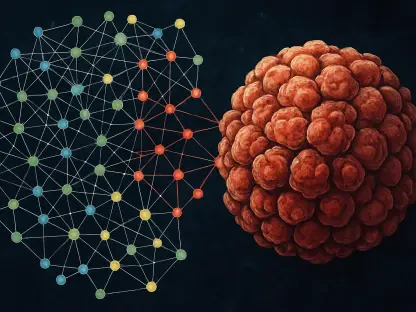Rett syndrome, a rare genetic disorder primarily affecting young girls, represents a profound medical challenge due to its debilitating symptoms and lack of a definitive cure. Originating from mutations in the MECP2 gene situated on the X chromosome, this condition leads to a deficiency in a crucial protein, manifesting in symptoms such as speech loss, motor skill impairments, breathing difficulties, and seizures. Traditionally, therapeutic strategies have struggled to address root genetic causes effectively. However, in a groundbreaking development, a team led by UC Davis Health scientist Sanchita Bhatnagar has introduced an innovative gene therapy method. This cutting-edge approach offers newfound hope by aiming to reactivate silent but healthy genes in affected individuals, suggesting a promising path toward mitigating symptoms and enhancing the quality of life for those suffering from Rett syndrome and similar X-linked genetic disorders.
The Mechanics of Gene Reactivation
The core innovation in this gene therapy approach lies in reactivating healthy yet dormant genes by counteracting the effects of microRNA, specifically miR-106a, which plays a pivotal role in X chromosome inactivation. The research team devised a unique DNA-based molecule, ingeniously designed as a “sponge,” that neutralizes miR-106a. This action allows the previously silent healthy gene to become active, offering a potential corrective mechanism against the detrimental effects of Rett syndrome. In laboratory studies utilizing female mouse models afflicted with Rett syndrome-like symptoms, this method demonstrated remarkable efficacy. The activation of the dormant gene resulted in noticeable improvements in the subjects, including increased survival rates, enhanced movement and cognitive abilities, and more stable breathing patterns. These promising results underscore the therapy’s potential not just to alleviate symptoms but also to fundamentally alter the progression of Rett syndrome by leveraging the body’s own genetic blueprint.
The significance of this discovery extends beyond the immediate results observed in preclinical models. This approach represents a paradigm shift in genetic therapy by focusing on the body’s innate capabilities to remedy genetic malfunctions. Unlike previous attempts that introduced external genetic material, this therapy harnesses existing endogenous genes, minimizing the risk of immune rejection and complications associated with integrating foreign genetic elements. This method’s elegance lies in its simplicity—rather than adding or altering genes, it unlocks the natural genetic potential already present within the organism. Such a strategy not only improves the safety profile of treatments but also opens avenues for addressing numerous other X-linked disorders where similar genetic silencing occurs.
Potential for Broader Applications
While the primary focus has been on Rett syndrome, the implications of this gene therapy are vast, with potential applications across a spectrum of X-linked genetic disorders. Conditions like fragile X syndrome, another disorder stemming from mutations on the X chromosome, could also benefit from therapies aimed at reactivating silent genes. The technological leap offered by this approach not only enhances understanding of genetic regulation but also provides a versatile framework for tackling various diseases. As genetic research propels forward, the methodology of reactivating endogenous genes might become a cornerstone for treating a host of genetic conditions. The real promise lies in its adaptability to various genetic challenges, affirming its role as a potentially universal therapeutic strategy.
This therapy is edging closer to clinical trials, pending further safety validations. Should these subsequent studies affirm its effectiveness without significant adverse effects, it could revolutionize treatment paradigms for genetic disorders. The ability to harness an organism’s genetic potential safely could transform medical approaches, particularly for conditions deemed intractable by conventional methods. This innovative technique invites reevaluation of current genetic therapies, challenging the notion that external genetic manipulation is the sole path forward. Patient communities, researchers, and clinicians remain cautiously optimistic, yet the horizon appears brighter with such promising methodologies on the verge of broader application.
A Future of Possibility
The core innovation of this gene therapy is its ability to reactivate healthy, dormant genes by countering microRNA effects, particularly miR-106a, which is crucial in X chromosome inactivation. Researchers created a novel DNA-based molecule designed as a “sponge” to neutralize miR-106a. This allows silent healthy genes to activate, providing a potential corrective mechanism for Rett syndrome’s negative impact. In studies with female mouse models exhibiting Rett syndrome-like symptoms, this method showed significant efficacy. Activating dormant genes led to improvements in survival rates, movement, cognitive abilities, and breathing stability. Beyond these findings, this therapy marks a paradigm shift in genetic therapy, leveraging endogenous genes to fix genetic malfunctions without introducing foreign genetic material, reducing immune rejection risks. By unlocking natural genetic potential, it enhances safety and opens possibilities for treating various X-linked disorders where similar gene silencing occurs.









